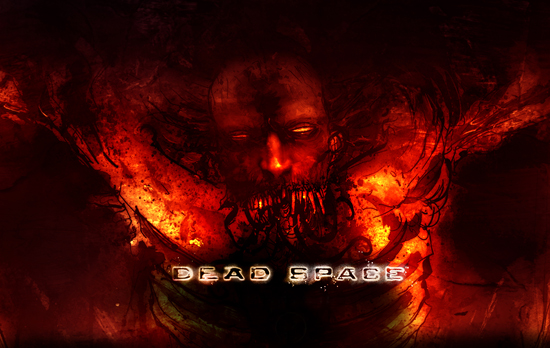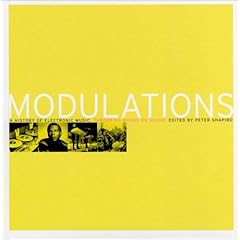 original sound version
original sound version has a good interview with the Audio Director repsonsible for the new Dead Space game. In the interview he discusses the approach his team took when designing the audio (sound design/effects and music) for the game.
He talks about how the original idea form the outset was to use the sound design to establish the mood of the game and not to have separate music and sound design tracks. He wanted the whole thing to be combined into a single unit that they could use as a textural device to support the ingame action and drama.
One of the most interesting things discussed is the use of "fear emitters"; these are attached to objects and enemies within the game and the players proximity to and the numebr of these emitters was used to control parameters of the audio. This meant that, just like in Horror movies, the audio team could produce a soundtrack that "builds up to the boo" and heighten the sense of suspense within the game. The musical soundtrack was also controlled by these "fear emitters" which allows the audio system to mix, in real time, the 4 stereo layered streams based on the level of fear at any given moment.
The team also created sounds that have no real source and are just there to make you look behind you and to scare you!
edit:
Following on from this article
music4games has a brief artcile written by EA's Audio Director Don Veca which looks at the music within Dead Space. He touches on things covered in the previous article and exaplains a few more things as well.
"Linear media allows the composer the luxury of knowing precisely what is going to happen; for example, the film dictates when and how long – exactly – a musical build-up will take. This is not the case, however, for interactive media where the video game player determines how the scene plays out.
To build a run-time system to interactively simulate this linear technique, we had to stop thinking like musicians and start thinking like programmers:
1. The music builds because things are getting scarier;
2. Things are scarier because there is more fear;
3. Fear is caused by eminent danger;
4. Certain objects in the world are (seemingly) dangerous.
5. Ergo, find a way to attach a sense of danger (fear) to various objects in the game world.
It occurred to us that our games already had the ability to emit point-source effects such as sound and light, so all we needed was a way to emit fear. This was the birth of the Dead Space Fear Emitter, which is simply a first-class game object that designers can place in the world or attach to other objects, most notably, the enemy alien creatures"
There is also a pretty good summary of the process involved in creating the music for the game.
The composer originally produced the 'traditional' type of ingame music but the game's creators wanted something that produced more of a texture and was not so obviously melodic, so in a method similar to temp tracks within the film industry the game's creators took sections fo music from horror movies and put these to the game to test their engine. The composer then took these themes and wrote new parts which were more improvisational and tetural in nature.










